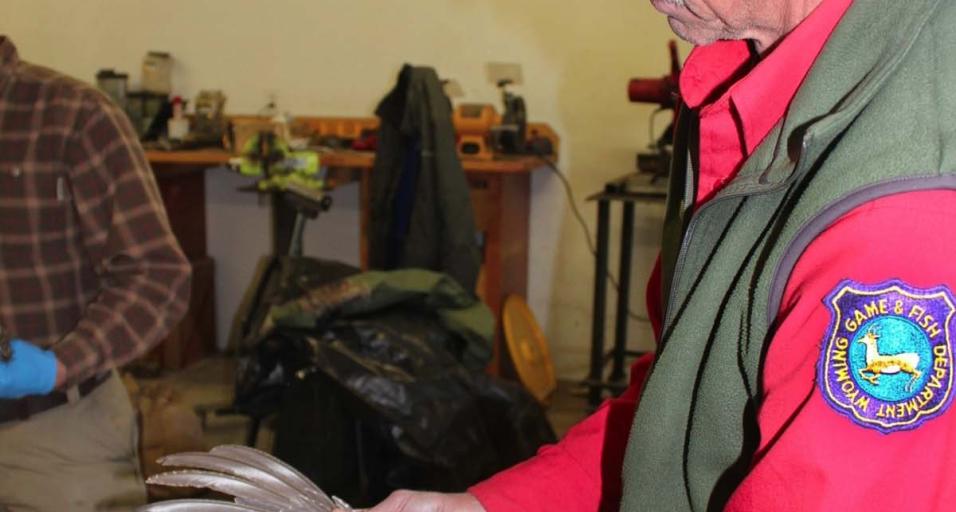Each year, biologists with the Wyoming Game and Fish Department and other agencies gather together to analyze wings of sage-grouse harvested in Wyoming to help determine an estimate of sage-grouse reproduction of that year.
This past winter, biologists with Game and Fish, Bureau of Land Management, U.S. Fish and Wildlife Service and the Natural Resource Conservation District partnered to determine the age and sex of 1,628 sage-grouse wings. The wings are collected from hunters primarily in central and southwest Wyoming who voluntarily contribute wings by dropping them off at designated collection points during the hunting season.
Sage-grouse/Sagebrush Biologist Leslie Schreiber said each wing is aged as a chick, yearling or adult and sex is determined by the size, or measurement of the wing. “This information helps us determine average number of chicks per hen that were produced for the year,” Schreiber said. “This information, used in conjunction with spring lek counts, gives us insight into how sage-grouse populations are doing in Wyoming.”
Wyoming sage-grouse populations are cyclic. “Typically, we see oscillations in sage-grouse populations year to year so biologists look at the trend, or average over a longer period of time,” Schreiber said. “Preliminary data indicates 0.83 chicks per hen this year, which indicates reproduction is down this season.”
Sage Grouse Wings Inform on Population Trends
Mark Gocke, Public Information Specialist, 307-249-5811

